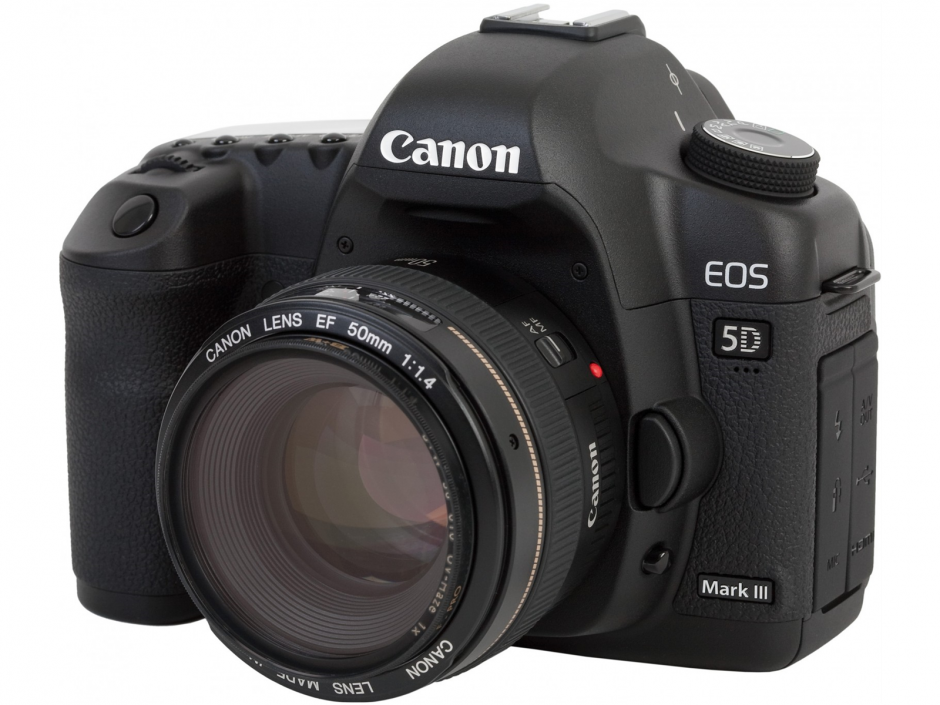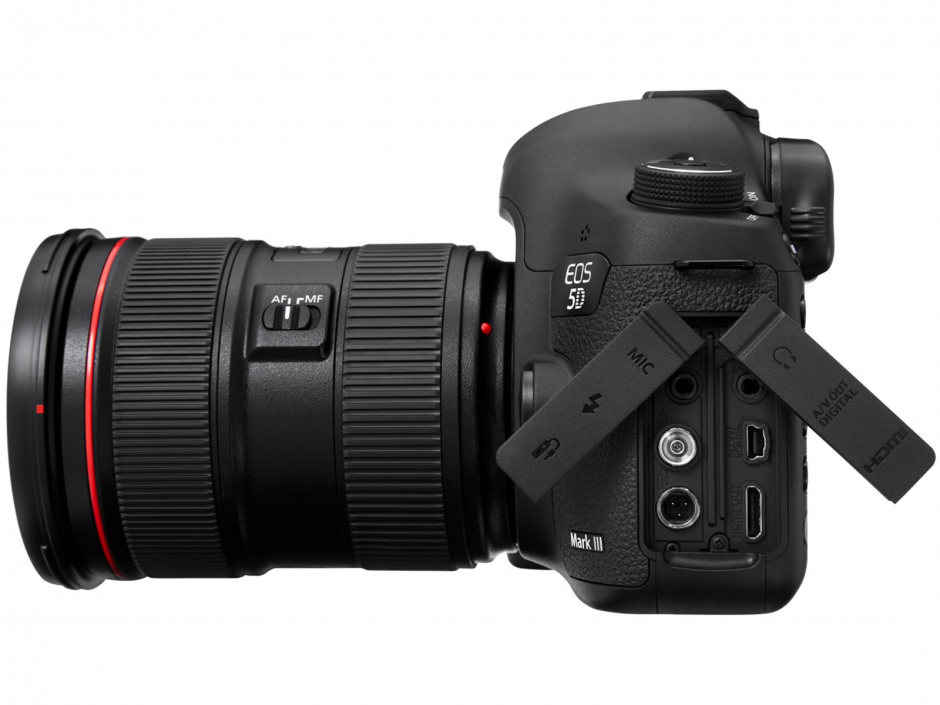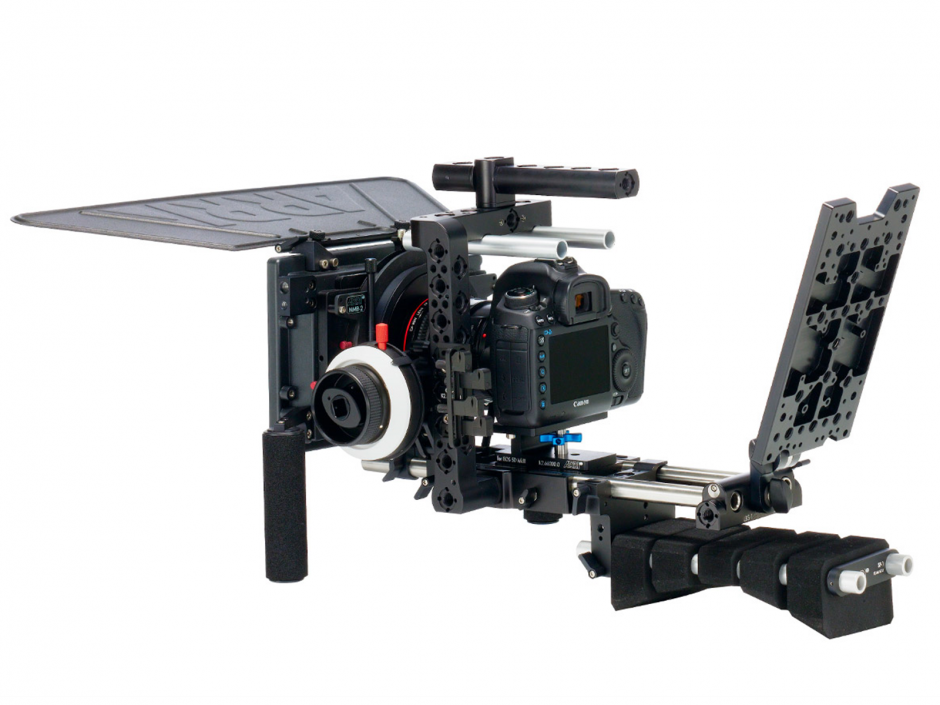Overview
The Power to Create.
Canon is proud to present the highly anticipated EOS 5D Mark III. With supercharged EOS performance and stunning full frame, high-resolution image capture, the EOS 5D Mark III is designed to perform. Special optical technologies like the 61-Point High Density Reticular AF and an extended ISO range of 100–25600 (expandable to 50 (L), 51200 (H1) and 102400 (H2) make the EOS 5D Mark III ideal for shooting weddings in the studio or out in the field, and great for still photography. Advanced professional-level high definition video capabilities (that includes a host of industry-standard recording protocols and enhanced performance) make it possible to capture beautiful cinematic movies in EOS HD quality. A newly designed 22.3 Megapixel full-frame Canon CMOS sensor, Canon DIGIC 5+ Image Processor, and shooting performance up to 6.0 fps provide exceptional clarity and sharpness, even when capturing rapidly-unfolding scenes. Additional technological advancements include an Intelligent Viewfinder, Canon’s advanced iFCL metering system, High Dynamic Range (HDR), and Multiple Exposure mode-all of which that help make the EOS 5D Mark III the perfect multimedia tool.
In response to user requests, Canon has released a firmware update that expands the versatility and functionality of the EOS 5D Mark III. This update enables the camera to export clean, uncompressed HDMI output to an external recorder, while still being able to record to internal CF or SD cards and monitor the video on the rear LCD display. In addition, this update improves autofocus performance by allowing cross-type support at f/8 (center point). Please click here to learn more.
Brilliant Sensor, Supercharged Processors.
22.3 Megapixel full-frame CMOS sensor
The EOS 5D Mark III features a newly developed Canon full-frame 22.3 Megapixel CMOS sensor that’s designed from the ground up to create high resolution, perfectly detailed images with unprecedented speed and clarity. A full 24 x 36mm, the sensor captures 5784 x 3861 large individual 6.25 µm pixels and has a much-improved S/N ratio resulting in better images from the start. A new photodiode structure with an increased photoelectric conversion rate increases the sensor’s sensitivity by approximately 2 stops over previous models, meaning higher ISOs with the lowest noise of any EOS digital camera. And a 2-line 8-channel simultaneous signal readout means speeds of up to 6.0 fps (RAW + JPEG) are possible!

14-bit A/D conversion, wide range ISO setting 100-25600 (L: 50, H1: 51200, H2: 102400)
The EOS 5D Mark III not only offers 14-bit signal processing for excellent image gradation, it delivers higher standard and expanded ISOs, and a score of new options to enhance shooting in varied and fast-changing lighting situations. With a standard range of ISO 100-25600, the EOS 5D Mark III represents a 2-stop increase in sensitivity over previous cameras. Thanks to the improved signal-to-noise ratio of the new sensor and powerful noise reduction, the EOS 5D Mark III can shoot at expanded sensitivities down to ISO 50 (L) and up to 51200 (H1), and even 102400 (H2)! Beyond the obvious advantages of its wide ISO range, the EOS 5D Mark III has automatic ISO settings, found on the dedicated ISO menu. Minimum and maximum ISO settings can be specified, as can a user-defined range, plus full auto and manual.

DIGIC 5+ Image Processor for enhanced noise reduction and blazing processing speed
For a whole new level of performance, the EOS 5D Mark III uses a DIGIC 5+ Image Processor. Working with two 4-channel A/D converter front-end processing circuits, and delivering speeds of up to 6.0 fps (RAW + JPEG), and the DIGIC 5+ Image Processor improves data processing performance and features new algorithms that promote greater noise reduction at higher ISOs. In addition to conventional image processing functions the DIGIC 5+ Image Processor offers real-time compensation for chromatic aberration in both still and motion images. With the power of this processor, speed improvements are noticeable from the instant the camera is turned on and the stunning results speak for themselves.

Canon’s Most Sophisticated AF, Period.
All new 61-Point High Density Reticular AF
The newly designed 61-Point High Density Reticular AF features an Offset Array Sensor (with staggering AF point arrangement) to deliver greater accuracy, no matter the situation. It offers multi-zone wide-area AF for better tracking, has 5 central dual cross-type points (f/2.8 diagonal), 21 central cross-type points (f/5.6 horizontal & vertical) and 20 outer cross-type points (f/4.0 horizontal), and is sensitive in extremely low-light situations (EV-2 for a central point with a f/2.8 lens). With the new firmware update installed, cross-type autofocusing with the center AF point is possible even when the maximum aperture of a Canon EF lens/extender combination becomes as small as f/8. If AF point expansion is selected with an f/8 maximum aperture lens/extender combination, the four AF points surrounding the center point will act as AF assist points. AF points above and below the center will be sensitive to vertical contrast, while points to the left and right will be sensitive to horizontal contrast.

The EOS 5D Mark III has a dedicated AF menu tab, so AF can be controlled without having to go through custom function menus. It also has 6 AF point selection methods (Spot, Single Point, Single + Adjacent 4 Points, Single + Adjacent 8 Points, Zone Selection, and Automatic AF Point Selection), plus a dedicated AF configuration tool for control of AI Servo AF III tracking parameters (tracking sensitivity, acceleration/deceleration tracking, and AF point auto switching).

Intelligent Metering, Fast.
iFCL Metering with 63-zone dual-layering metering sensor
The EOS 5D Mark III features Canon’s multi-layer 63-zone iFCL (intelligent Focus Color Luminance) Metering System that integrates the cameras AF system into its readings. By taking into account the color and luminosity surrounding the chosen AF point(s), this new system delivers an entirely new level of accuracy, especially in situations where the light changes quickly. The metering sensor enables evaluative, center weighted, partial and spot metering, plus offers 5-step exposure compensation for perfectly exposed images, every time.





















